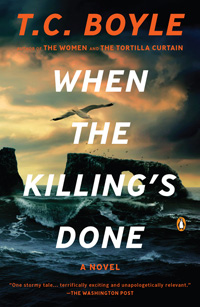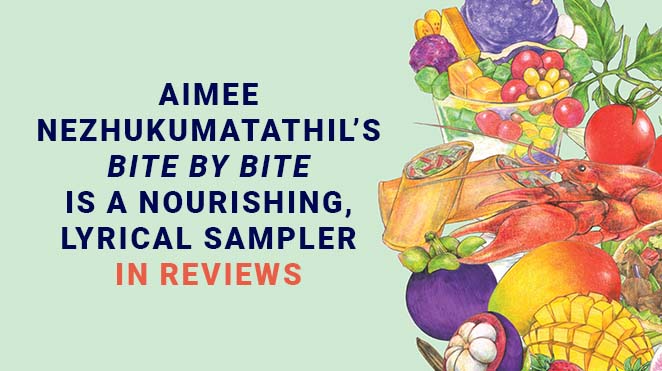Full of the promise of the unspoiled, islands have beckoned to mankind since before the first boat left its first wake upon the water. Isolated bits of land in the midst of inhospitable, liquid deserts, islands give people the opportunity to create, to destroy, to fulfill the human desire for ultimate power. As metaphors for the place of our species in the universe, islands have provided generations of authors with perfect settings for stories exploring human relationships with nature and each other. In his novel When the Killing’s Done, T.C. Boyle fully exploits this theme, pushing his protagonists into open warfare over the fate of the tiny ecosystems of California’s Channel Islands. It is a clash of values that leaves no one unscathed.
The Channel Islands, not far from Boyle’s home in Santa Barbara, are sometimes called “America’s Galapagos” because of their unique assemblage of plants and animals living in isolation from the surrounding world. Or near isolation: biologists believe rats first arrived in this paradise via an 1853 “error in judgment” that shipwrecked the SS Winfield Scott. “That error,” writes Boyle, “whether it was the result of hubris, overzealousness or a simple mistake of long division, doomed her, and as the years spun out, doomed generations of seabirds too.” Rats are notorious the world over for wreaking havoc on island ecosystems, havoc that has resulted in the extinction of many species. The Channel Islands’ system was no exception to this carnage. But what, if anything, could or should be done to correct the problem? For Boyle’s Alma Takesue, a park-service biologist, the answer is morally clear: kill the rats, so the birds, and other animals dependent on them, can survive.
 Opposing Alma is animal-rights activist Dave LaJoy, a mirthless misanthrope willing to do anything to prevent the killing of any animal. Their mutual hatred provides a wonderful launching point for Boyle’s contemplation of our own proper role in nature’s system of checks and balances. Alma and Dave each consider themselves the true guardians of the welfare of the islands’ non-human inhabitants. In common terminology, both are environmentalists, determined to limit man’s damage to the planet. But Boyle has cast them in stark contrast, delineating one of many fault lines in the environmental movement that the general public often fails to appreciate. The philosophical divide runs deeper than a dispute between a “hands-on” and “hands-off” approach, questioning even the definition of “hands.” Are human actions part of nature’s—God’s—plan, or should those actions be “corrected” wherever they cause unwelcome change?
Opposing Alma is animal-rights activist Dave LaJoy, a mirthless misanthrope willing to do anything to prevent the killing of any animal. Their mutual hatred provides a wonderful launching point for Boyle’s contemplation of our own proper role in nature’s system of checks and balances. Alma and Dave each consider themselves the true guardians of the welfare of the islands’ non-human inhabitants. In common terminology, both are environmentalists, determined to limit man’s damage to the planet. But Boyle has cast them in stark contrast, delineating one of many fault lines in the environmental movement that the general public often fails to appreciate. The philosophical divide runs deeper than a dispute between a “hands-on” and “hands-off” approach, questioning even the definition of “hands.” Are human actions part of nature’s—God’s—plan, or should those actions be “corrected” wherever they cause unwelcome change?
Both Alma and Dave lay fervent claim to the truth, and neither are very likable sorts. Alma is single-minded and difficult to live with. She wants to remake the world: “If she had enough money—say five-hundred billion or so—she’d buy up all the property in town, raze the buildings, tear out the roads, and reintroduce the grizzly bear,” Boyle writes. What she would do with her fellow humans is tellingly left unsaid. But as driven as Alma is, Dave is portrayed as the ultimate egomaniac, so convinced of his animal-righteousness that to score his victory he willingly puts in jeopardy everyone he might call a “friend.” Irony fairly bleeds off the page when Boyle brings the two together at a public meeting about the planned rat kill, where Dave yells, “And who exactly was it appointed you God, lady?”
 When the Killing’s Done is an epic, multi-generational story that raises as many questions about individual human motives as it does about the human place in creation. Alma, through her remarkable, survivor grandmother, has a deep connection to the islands. She loves them as she loves nothing, and almost no one, else. Dave loves no one outside himself, but his girlfriend—his principal accomplice, really—also has emotional ties to the islands, where she learned first-hand the despair of watching loved ones and things snatched away. Boyle assures us, through his strong prose and quirky humor, that these are people doing what comes naturally, products of history as certainly as the animals that make the islands their home.
When the Killing’s Done is an epic, multi-generational story that raises as many questions about individual human motives as it does about the human place in creation. Alma, through her remarkable, survivor grandmother, has a deep connection to the islands. She loves them as she loves nothing, and almost no one, else. Dave loves no one outside himself, but his girlfriend—his principal accomplice, really—also has emotional ties to the islands, where she learned first-hand the despair of watching loved ones and things snatched away. Boyle assures us, through his strong prose and quirky humor, that these are people doing what comes naturally, products of history as certainly as the animals that make the islands their home.
Boyle, in making Dave the villain of the story, clearly takes sides in this ultimately theological dispute. Alma’s way, he shows, is the way of science and logic, not the demagogic simplicity of Dave’s no-kill mantra. But the argument is not easily won by either side. As Michael Crichton wrote in Jurassic Park, another island-based book about humans playing God: “Life breaks free.” Boyle understands this truth, and has crafted When the Killing’s Done to stress the uncertainty that must be accepted when working with nature, whether or not that nature includes humanity.
T.C. Boyle will discuss and sign When the Killing’s Done on March 16 at the Nashville Public Library as part of the Salon@615 series. A public reception begins at 6:15 p.m. and will be followed by a reading at 7. Both events are free. Click here for details.
Tagged: Fiction





